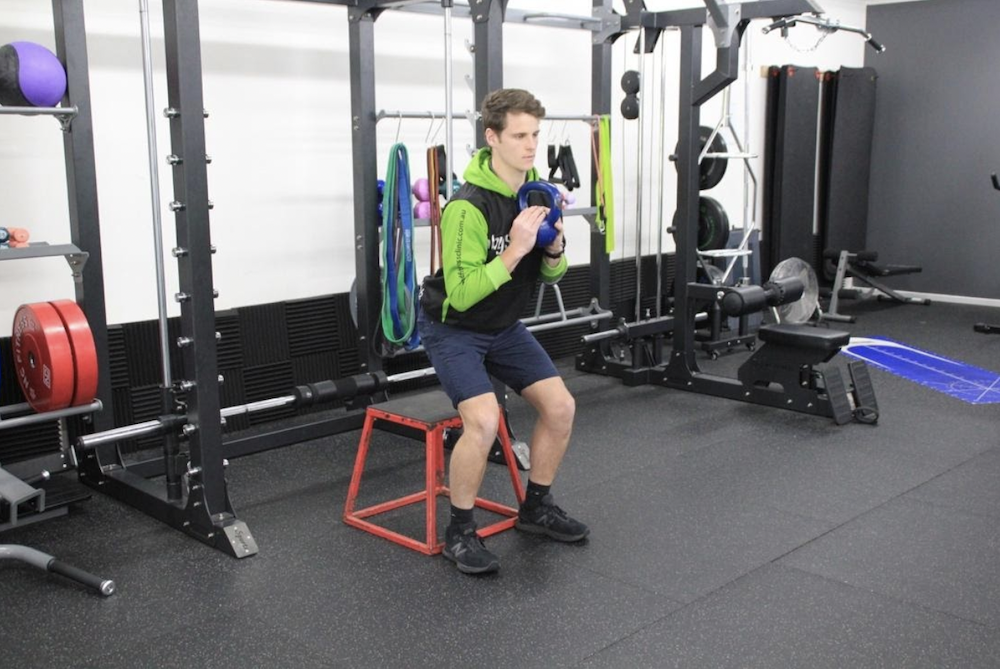#5: Patellofemoral pain
Case series blog #5: Patellofemoral pain.
Ms P is a 14-year-old female, who presented to Physio and Fitness Clinic after 15 months of right sided knee pain covering her patella region. Ms T reported this pain started without incident, and had fluctuated for severity since its onset. Symptoms were aggravated with vigorous activity such as her karate training or climbing stairs (ascending but not descending), in the form of sharp pain. Additionally, Ms T experienced aching pain in the same region when running or walking for longer periods of time. This ache also occurred in the evening on days in which she was most active. Her father had trialled taping for the patella to reduce symptoms with mild benefit.
Whilst there are a number of injuries that could contribute to the symptoms Ms T reported, the subjective history suggested the most likely source was patellofemoral pain (PFP). In the absence of traumatic incident, ligamentous or cartilaginous injury was unlikely, and a lack of localised pain meant tendinopathy would not be the source (at least in isolation). This was confirmed with palpation of relevant structures (MCL, LCL, knee joint lines, patellar tendon, quadriceps tendon), and relevant tests. Mild pain was replicated at the patella with direct compression, and also with a step-up test (20cm box) – this pain abated with passive patella glide laterally for step up.
Isolated hip extension/flexion strength were similar to the unaffected limb, as was knee flexion; however, knee extension was reduced on the affected limb. Therefore, this was made the target of exercise therapy. Exercise progressions were trialled until the optimal loading exercise (targeting knee extension) was determined – this was the highest load that was tolerable before pain greater than 4-5/10 was provoked. For Ms P, this was a double legged squatting with 10 Kg external resistance at 3×8 repetitions (figure 1), at an intensity of two repetitions-in-reserve (RIR; fatiguing, but feel two more repetitions would be possible).

Figure 1: Example of double leg (regular) squat with external resistance.
Patella glide taping was applied for pain relief (lateral glide as was responsive in the objective assessment), which was filmed with permission of the physiotherapist and patient by a family member of the patient who was present to allow re-application at home for anticipated high strain activities. Additionally, extensive education was provided. This focused on task modification based on symptoms (pain during activity should be mild, and settling within 24 hours post), PFP being a self-limiting condition, pain-management strategies (e.g. ice after activity, compression), the role of strengthening exercises and how to progress these – if pain within acceptable limits for two consecutive sessions of exercise, and intensity was perceived as being lower than two RIR, Ms P was instructed to add two further repetitions. This was repeated until 3×12 repetitions were performed, then weight would be added (and repetitions revert back to 3×8 repetitions with the heavier external resistance).
After one month, Ms P reported she was no longer experienced pain with stairs or other high strain activity, rather the only symptoms experienced was pain in the evening after particularly strenuous activity repeated throughout a day. Ms P had progressed her exercises per education provided, and was completing 3×12 repetitions of squatting exercise with 10 Kg resistance at a two RIR intensity. Additional exercise was trialled and prescribed, to further strengthen the knee extensors. This was supported single leg squatting exercise, which achieved thee two RIR intensity with body weight at 8 repetitions. Accordingly, 3×8 repetitions of this exercise were prescribed, with the same progression advice as was provided in the first consult.
At the time of posting, Ms P is still undergoing rehabilitation. Based on symptom progression to date, she is likely to achieve a great result.
Discussion:
PFP is typically affects young active individuals, and is twice as common in females [1]. It is considered one of the most common knee injuries in adolescents, with early sports specialisation thought to contribute, as well as developing/reduced motor control [2].
Multiple published guidelines exist that make recommendations for the management for PFP. These suggest exercise therapy should be included in management, targeting the hip and knee, for pain management initially and to improve function long term [2]. This should be specific to the individual’s needs, i.e. if quadriceps strength deficits are found, knee extension strengthening exercise could be used. Examples of exercises that could be used to target strength of the quadriceps includes knee extensions, lunges or squats. Exercise load should be progressed over time, based on both a pain-guided model (acceptable pain during and after exercise being approximately 4-5/10 NPRS, although based on individual factors), and also on difficulty. This should be challenging, and specific to the intensity needs for targeted adaptation e.g. improved strength.
It is also recommended exercise therapy should be combined with one of foot orthoses, patella taping or manual therapy, to reduce pain and enable exercise and activity participation [2].
Education to enable self-management of symptoms is also considered extremely important. This should be aimed at improving self-management capacity and improving adherence, and at a minimum cover load management (which can be based on symptom-response to activity), the benefits of certain interventions and importance of adherence (e.g. to exercise therapy), strategies to progress exercise, and addressing movement related fears [2].
References:
- Smith, B. E., Selfe, J., Thacker, D., Hendrick, P., Bateman, M., Moffatt, F., … & Logan, P. (2018). Incidence and prevalence of patellofemoral pain: a systematic review and meta-analysis. PloS one, 13(1), e0190892.
- Crossley, K. M., van Middelkoop, M., Barton, C. J., & Culvenor, A. G. (2019). Rethinking patellofemoral pain: prevention, management and long-term consequences. Best Practice & Research Clinical Rheumatology, 33(1), 48-65.
